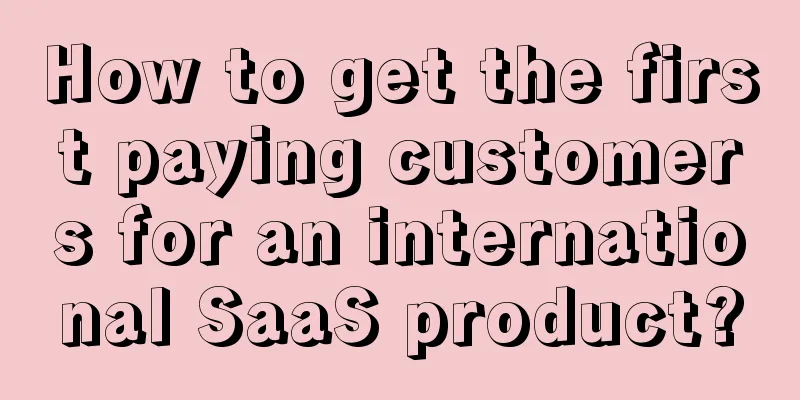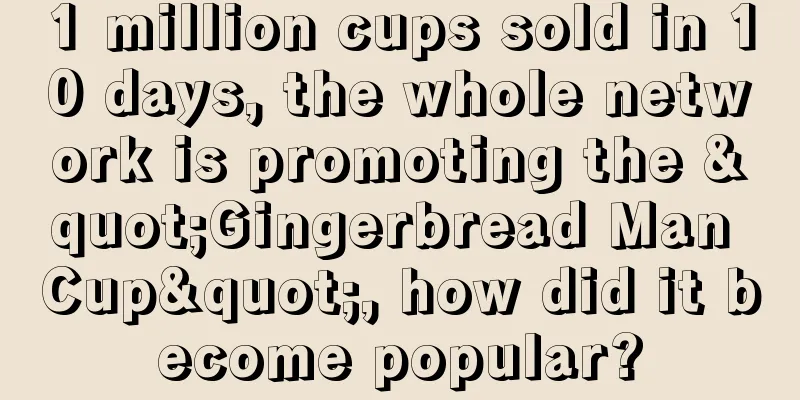How to get the first paying customers for an international SaaS product?

|
In August 2021, the sales team recommended four Enterprise customers who had high intentions for insurance business. We did some research and found that this product had opportunities (it was a general demand, there were similar products on the market, and the demand was verified by the market), so we quickly launched the project. 🤩 In September 2021, AfterShip Protection completed the MVP version and launched it online. While iterating rapidly, we are negotiating cooperation with Enterprise customers. It feels like the product is about to take off. 😎 However, it took more than half a year of communication before we were able to schedule the product with the client and meet the client's launch standards. The launch was finally completed in mid-2022. 😔 As a result, after two weeks of going online, the customer felt that the number of consumers who purchased insurance did not meet expectations, so they quietly took this feature offline. 😭 This was undoubtedly a pour of cold water on us. Fortunately, in July 2022, AfterShip Protection began to transform to serve Mid-Market (medium-sized enterprise) customers. Up to now, it has acquired a certain number of Mid-Market customers, and the product is gradually getting on track. If we had a time machine and could go back to 2021, I believe there are many things we could do better. Unfortunately, there is no time machine in the world, so I hope to share the lessons learned along the way with everyone, to help other friends who want to do international SaaS avoid some pitfalls and get results faster. #Find the product’s PMF (Product market fit) first, don’t just pile on features right away Let's do a thought experiment first. If you were asked to open a milk tea shop now, when you made your first cup of milk tea, you would have two choices: 1. Try to find the first batch of seed customers and ask them to taste the product and get feedback; 2. Continue to research and develop different flavors of milk tea behind closed doors; Which one would you choose? I believe most people would choose A. After all, only with customer feedback can we know what flavor formula of milk tea will be more marketable in the future. Our SaaS products are similar. After we have made the MVP product, what we should do is not to work behind closed doors and develop more product features, but to try to sell the MVP product to customers first.The MVP version does not require perfection, but it must complete the business closed loop and run the process smoothly. It cannot have so many bugs that the process cannot run. Some non-core functions can be handled manually first and then considered for automation later, such as automatic customer access and usage processes, financial settlement processes, etc. After the AfterShip Protection MVP product came out, because no customers used it for a while, we basically did not invest resources to continue iterating, and only retained half of the R&D and maintenance product. I also only invested 20-30% of my energy in this project. The team’s main goal during this period is to acquire customers, because if there are no customers, making further investments may be a waste. The version we delivered to the first Mid-Market customer may not have scored 60 points, but we also connected some Mid-Market customers with this version because the AfterShip Protection business can indeed bring value to customers. For example. After the customer (e-commerce seller) turns on AfterShip Protection, if the consumer chooses to purchase express insurance when shopping and the corresponding package is lost, the customer can quickly discover the problem and apply for compensation from the insurance company, and the consumer will be compensated. This means that customers can get compensation without spending a penny, and at the same time, consumers' after-sales issues can be handled quickly, improving consumer satisfaction and generating repeat purchases. Because of these values, even if customers discover many expected or unexpected problems during the access and use process, they are willing to give us feedback and wait for us to solve the problems rather than directly give up using our products. These feedbacks are actually the direction of product iteration. We should think about and iterate product functions based on real customer feedback, rather than fantasizing about what functions customers need behind closed doors.It’s like when you make your first cup of milk tea, you have to find customers to taste it first, and then adjust the taste based on customer feedback, instead of fantasizing in the store that customers will like the next bitter melon-flavored milk tea. # For new products, it is easier to reap the fruits of victory by targeting Mid-Market than by targeting Enterprise customers.When looking for customers, we also need to think about which customers the product should start with. Enterprise customers are large organizations with large and stable business volumes, strong payment capabilities, and long decision-making chains, but they are relatively few in number, just like stars. Mid-Market customers are medium-sized organizations with relatively stable businesses, certain payment capabilities, short decision-making links, and are much more numerous than Enterprise customers, just like Internet celebrity bloggers with thousands or tens of thousands of fans. We also hope that we can sell our first cup of milk tea to Jay Chou, but there is a high probability that he has no time to pay attention to us. Even if we get in touch with him, the quality of our first cup of milk tea will hardly meet his expectations. But if we turn around and look for those internet celebrities with thousands or tens of thousands of followers, we may be able to get feedback from them quickly and iterate our products quickly. It’s similar when we make products. If you want to serve Enterprise customers, it is recommended to test the waters with Mid-Market customers first. Previously, AfterShip Protection started out with the goal of targeting Enterprise customers, but when we targeted Enterprise customers, we spent more than half a year communicating and onboarding them, only to find that the customers stopped using our service two weeks after going online. Fortunately, we subsequently received intention applications from multiple Mid-Market customers, one of which was successfully launched. It only took about two weeks from communication to launch, which is much shorter than the decision-making cycle and access time of Enterprise customers. Although because the product is still in the MVP stage, customers will encounter some problems during the launch process. But every time there is a problem, the customer will come to complain. After we solve the problem quickly, the customer will continue to use our products. This made me realize that "Mid-Market customers are really a group of good partners who can grow with the product": the decision-making chain is short, the access time is short, and they are willing to give feedback. From customer feedback, we can also gain a clearer understanding of product problems and customer scenarios. The product has grown, the team has grown, and there is a sense of belonging and accomplishment in building products together with customers. Moreover, the revenue from connecting to several Mid-Market customers may be similar to that from connecting to one average-level Enterprise. By first securing a few Mid-Market customers, you can lay a good foundation for securing Enterprise customers later. # Use existing resources to find ways to expose your product and get initial customersSo how do you get your first customer? Taking selling milk tea as an example, if we already have a bakery that is doing well, then the best way is to promote our milk tea to the existing customers of the bakery first. It’s similar when doing SaaS. First, leverage existing customer resources for cross-selling.Customers who are already using the company's mature products will have a good impression of our company and a certain degree of trust. At this time, when we promote other products to customers, customer acceptance will be relatively high. There are the following ways to make good use of existing customer resources and acquire potential customers for new products: 1. Have the customer success team introduce new products to Enterprise customers at regular meetings to gain customer interest; 2. Design a good product landing page that conveys value, provide an entry display in the system and official website, let customers understand and apply for trial products, and follow up with potential customers who apply; 3. Based on the customer profile of your product, find out the existing customers who fit the profile (maybe several thousand or several hundred), send product information emails to specific customers, collect customer intentions and follow up; 4. Use the power of marketing to hold seminars, establish an image as an industry and solution expert, and attract more customers. The success rate of closing deals when customers come to you is generally higher than when you cast a wide net. You can try both active and passive methods, but you can’t contact customers too frequently and disturb them. In the customer acquisition process, you can be a little "sloppy". If you have the energy, talk to more customers and don't rely on one tree. Second, better communicate the product during the sales process.1. Try to introduce your product through the "problem-solution-result" approach. Don’t just introduce the features, introduce the solution from the customer’s perspective, and it would be even better if you can prove it with data. Taking AfterShip Protection as an example, we would say: More than 80% of buyers will encounter problems with order loss or damage. If the merchant does not handle it in a timely manner, buyers will basically not make repeat purchases, and the merchant will also need to bear losses when handling these problems. When an order is lost or damaged, AfterShip Protection can make quick compensation, providing consumers with a fast and convenient compensation experience, while reducing merchants' losses and improving customer satisfaction. Few customers are willing to be the first to try something new, and they also want to know how to use the product to best effect. Therefore, it is generally difficult to win the first customer, and it depends a lot on luck. In addition to the product itself being able to solve customer problems, the customer's own acceptance of new things, whether the product introduction of the sales and product team directly addresses pain points, and the professionalism of the presentation are also important. Due to the characteristics of the organization, Mid-Market will definitely make decisions faster than Enterprise, have lower trial and error costs, and be more receptive to new things. Therefore, we can consider helping a Mid-Market customer to make good use of the product first, conduct a Case Study, and then promote it to more customers. It’s like we want to sell milk tea to an internet celebrity first, and then use the title of “the same product as the internet celebrity” to sell it to more customers. # If you want to make a good product, you must first provide good customer serviceSome new SaaS product managers may think that they are just a product maker, and selling products and answering customer questions are none of their business. But in fact, when we want to make a new product well, we have to play both the role of father and mother, pay more attention to it, and respond to customer feedback and complaints. This is just like starting a business. If you open a milk tea shop yourself, you are the boss and not only do you have to make milk tea, but you also have to distribute flyers (marketing), clean the shop and handle customer complaints (solve after-sales problems). Andrew, our AfterShip co-founder and CMO who is in charge of the product design team, worked in customer service for five years when he was working on the AfterShip Tracking product. This is a must for understanding customers and building a good product. If we start working on product requirements without understanding customer scenarios and demands right from the start, we will often think that the features we develop are what customers need and like. But the truth is cruel. We may have made a lot of stupid features, but because we have not been exposed to real feedback from customers, we feel good about ourselves and always feel that "no one understands the product better than me." Listening to the second-hand information shared by the customer service team is far less impactful than facing customers directly. Only by standing on the front line can you know that some of the functions you have developed are not as world-changing as you imagined, and may even be full of complaints.For example, we calculate and charge premiums in Shopify stores through plug-ins. Due to compatibility and network issues, the premiums paid by consumers may be lower than the actual premiums. In order to avoid losses, we will intercept these insurance policies in the background and notify merchants to refund consumers. Everything seems logical. However, when merchants received this notice, they expressed their incomprehension. They hoped that the purchase would be successful and were willing to bear the price difference. This is the gap between ideal and reality. After learning about this scenario, we took this logic offline and repurchased the failed policy. Regardless of whether the premium was overpaid or underpaid, the policy would be purchased normally. Only when we encounter practical problems can we rethink and consider the problem from the customer's perspective and from a global perspective before making demands. Of course, it is not easy to be a customer service representative. What I am afraid of is having a "fragile heart". Many times I need to deal with customers' dissatisfaction and serve them on my knees with a submissive attitude, because I am really afraid that new customers will run away. Don’t be afraid of being scolded, be afraid of no one scolding you. When being scolded, you should constantly reflect and summarize, review and grow, and cultivate empathy. It is difficult for a PO who has never worked as a customer service representative or been scolded by a customer to make a good product. And don't be afraid of hard work, because we serve overseas clients, so sometimes we need to meet with clients late at night or even in the early morning. For example, I have tried to meet with customers at 12 a.m. for three consecutive Fridays to solve their usage problems and answer their product questions. I have also tried to introduce products to customers at 5 a.m. and help them connect. These customers are still using our products and have given us good feedback. I feel that my efforts are worthwhile and not in vain. After we have been working in customer service for a while and have basically solved the pain points reported by customers, reducing the churn rate of existing customers and improving their usage of the product, this shows that the product can attract more new customers. If newly acquired customers leave after a short period of time, then this means that there is a problem with the product. Either it is a process problem that needs to be optimized and polished, or it is a direction problem that needs to be redefined. # No boundaries, overcome difficulties with the teamWhen developing new product businesses, in order to make the business closed-loop, operate better, acquire customers, and collect money, in addition to acting as customer service and handling customer issues, we also dealt with many issues that were not previously involved, including how to collect money (financial issues), whether it is possible to collect money in this way (legal issues), and whether the business can be run in this way (third-party supplier issues), etc. As a member of the team responsible for this product business, we need to learn to set no boundaries. As long as the product business requires it, we must do it, such as: 1. When I found that the business had great potential and needed dedicated investment to do well, I applied to invest more energy in AfterShip Protection. In the process, I re-estimated the project value, conducted a competitive product analysis, and asked my superiors for more R&D resources; 2. I know nothing about finance, but we have to settle accounts with customers and collect premiums, and we also need to settle premiums with insurance companies. During the process, I have to bite the bullet and communicate with the financial team about how to collect money, what data details to provide to customers, whether the fees are correct, etc. 3. After connecting with customers, because new insurance-related issues continue to emerge in the business, we will arrange to communicate with the insurance company one night a week to discuss how to solve the problems we encounter, and synchronize project progress to let them understand our situation, so as to gain their support and maintain a good trust relationship. Many problems do not have fixed processes and solutions at the beginning, so we can only continue to communicate with relevant parties to obtain support, solve problems when they arise, and sort out the processes together to slowly make the business and processes run smoothly. # SummarizeStarting a new product business is like starting a milk tea shop. After making the first cup of milk tea (MVP product), don’t think about researching new flavors behind closed doors (stacking product features), but find the first batch of seed customers and get customer feedback. If we target big stars (Enterprise customers) at the beginning, it may be too difficult and the cycle will be too long, so we can consider starting with internet celebrities and bloggers with smaller traffic (Mid-Market customers). When acquiring seed customers, you can prioritize cross-selling among customers of bakeries (other mature products) and research how to better convey the value of your product. It would be best if you could turn your product into an Internet celebrity product through case study (the best practice in the industry). In this process, we not only have to make milk tea in the background (create products), but also stand on the front line to distribute flyers (marketing) and handle customer feedback and complaints (serve as customer service). Because only in this way can we obtain the most authentic customer feedback and make the product better and better. |
<<: The "huge wealth" of bees and flowers cannot be achieved by relying solely on free traffic
>>: AI is a standard feature of future SaaS, but it is not a panacea
Recommend
Case Analysis | Analysis of Weipaitong’s User Operation System
More and more cultural relics enthusiasts hope to ...
Review interviews and salary negotiations, you will definitely need it
Introduction: This article is an interview and job...
The fate of Xiao Yangge and Dong Yuhui
The transformation of the live streaming e-commerc...
In the second half of the super anchors’ career, they all bet on their own brands
The enthusiasm of the super-head anchors to create...
Learn to be a "stall owner" on Xiaohongshu, and your ideas for monetization will open up immediately
Xiaohongshu has multiple monetization methods, adv...
The best private domain looks like: there are catering membership cards with hundreds of millions of sales
This article introduces how to expand the micro-sh...
How to operate Alibaba International Station? What are the steps?
Everyone wants to try to open a store on Alibaba I...
2023! A comprehensive review of 25+ Mid-Autumn Festival gift boxes from ByteDance, Ctrip, Weilai, Guangzhou Metro, etc.!
Another Mid-Autumn Festival is coming, and brands ...
Without public domain, you can’t grow big; without private domain, you can’t be stable
This is an era of omni-domain marketing. The value...
On Labor Day, let’s talk about whose jobs AI is replacing?
At the beginning, our purpose of developing AI was...
Xiaohongshu and the “New Emily”
With the rise of social media, personal influence ...
Ele.me's new copywriting, eating happily~
Ele.me launched new copy with the theme of life at...
How many words are usually used in Amazon manual ads? How to advertise?
In Amazon advertising strategy, manual advertising...
What should I do if Amazon Europe does not have VAT? What does Amazon Europe VAT mean?
Dear Amazon merchants, if you want to open a store...
What is the appropriate inventory setting for Shopee products? How to operate it?
Shopee, like AliExpress and Amazon, is a cross-bor...









